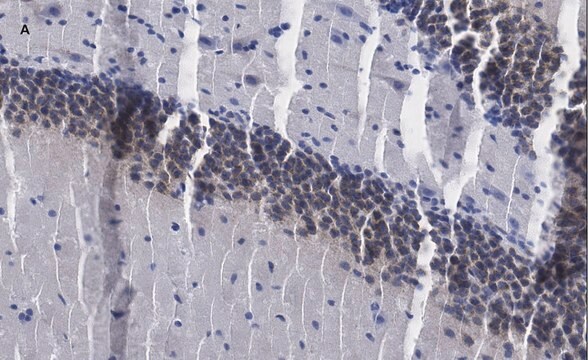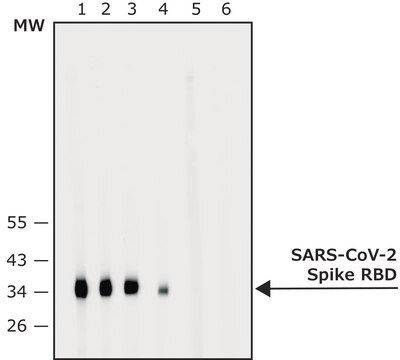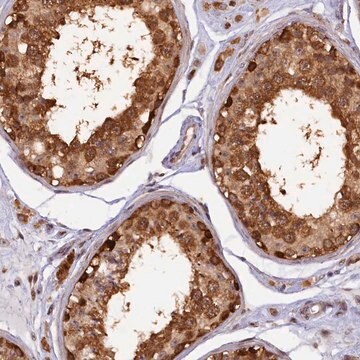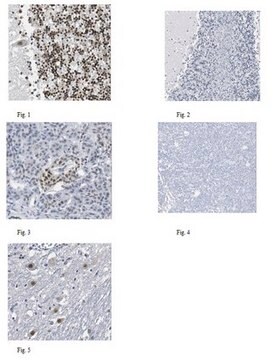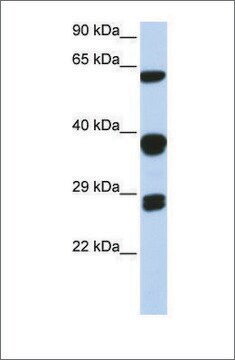S0698
Anti-SmB antibody, Mouse Monoclonal
clone 12F5, purified from hybridoma cell culture
Synonim(y):
Anti-SNRPB1, Anti-Sm protein B, Anti-Sm-B, Anti-SmB/SmB, Anti-Small nuclear ribonucleoprotein associated protein B, Anti-snRNP-B
About This Item
Polecane produkty
pochodzenie biologiczne
mouse
Poziom jakości
białko sprzężone
unconjugated
forma przeciwciała
purified from hybridoma cell culture
rodzaj przeciwciała
primary antibodies
klon
12F5, monoclonal
masa cząsteczkowa
antigen ~25 kDa
reaktywność gatunkowa
human, mouse, canine
metody
immunocytochemistry: suitable
immunoprecipitation (IP): suitable
indirect ELISA: suitable
western blot: 0.5-1 μg/mL using HeLa nuclear cell extract
izotyp
IgG1
numer dostępu UniProt
Warunki transportu
dry ice
temp. przechowywania
−20°C
docelowa modyfikacja potranslacyjna
unmodified
informacje o genach
human ... SNRPB(6628)
mouse ... Snrpb(20638)
Opis ogólny
Immunogen
Zastosowanie
- Monoklonalne przeciwciało anty-SmB produkowane u myszy zostało użyte w:
- western blotting
- test immunoenzymatyczny (ELISA)
- immunoprecypitacji
- immunocytochemii
Działania biochem./fizjol.
Postać fizyczna
Oświadczenie o zrzeczeniu się odpowiedzialności
Nie możesz znaleźć właściwego produktu?
Wypróbuj nasz Narzędzie selektora produktów.
Kod klasy składowania
10 - Combustible liquids
Klasa zagrożenia wodnego (WGK)
WGK 1
Temperatura zapłonu (°F)
Not applicable
Temperatura zapłonu (°C)
Not applicable
Środki ochrony indywidualnej
Eyeshields, Gloves, multi-purpose combination respirator cartridge (US)
Wybierz jedną z najnowszych wersji:
Certyfikaty analizy (CoA)
Nie widzisz odpowiedniej wersji?
Jeśli potrzebujesz konkretnej wersji, możesz wyszukać konkretny certyfikat według numeru partii lub serii.
Masz już ten produkt?
Dokumenty związane z niedawno zakupionymi produktami zostały zamieszczone w Bibliotece dokumentów.
Nasz zespół naukowców ma doświadczenie we wszystkich obszarach badań, w tym w naukach przyrodniczych, materiałoznawstwie, syntezie chemicznej, chromatografii, analityce i wielu innych dziedzinach.
Skontaktuj się z zespołem ds. pomocy technicznej
